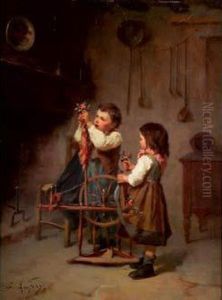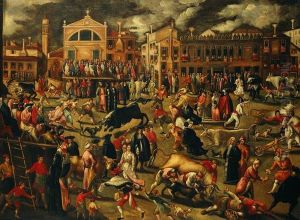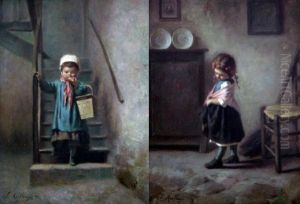Joseph-Athanase Aufray Paintings
Joseph-Athanase Aufray, born in 1836 and deceased in 1885, was a notable French sculptor whose career blossomed during the 19th century, a period rich with artistic innovation and the flourishing of Romanticism and Realism in art. His work, though not as widely recognized as some of his contemporaries, contributes significantly to the French sculptural landscape of his time.
Aufray's early life is somewhat obscure, but it is known that he was born into a period of great political and social change in France, which saw the transition from the July Monarchy to the Second Republic, and then to the Second Empire under Napoleon III. These tumultuous times influenced many artists of the era, and Aufray was no exception. He was trained in the fine arts in Paris, where he studied under prominent sculptors and embraced the dominant artistic movements of his time.
Throughout his career, Aufray exhibited at the Paris Salon, the official art exhibition of the Académie des Beaux-Arts in Paris. His submissions to the Salon helped establish his reputation, showcasing his skill in both marble and bronze. Aufray's sculptures often depicted figures from mythology, history, and occasionally, contemporary life, reflecting the era's fascination with classical antiquity and the human form.
Despite his talent, Aufray's works were often overshadowed by those of his peers, such as Auguste Rodin, who would come to dominate the era with his expressive style and innovative techniques. Nevertheless, Aufray's contributions to French sculpture remain noteworthy. His attention to detail, his skillful use of materials, and his ability to convey emotion and narrative through sculpture speak to his mastery of the medium.
Aufray's death in 1885 marked the end of a career that, while not as celebrated as some, significantly enriched the French artistic tradition. Today, his works can be found in museums and collections in France and beyond, where they continue to be appreciated for their beauty and craftsmanship. Aufray's legacy, as part of the 19th-century French sculptural movement, highlights the depth and diversity of talent during this pivotal period in art history.















